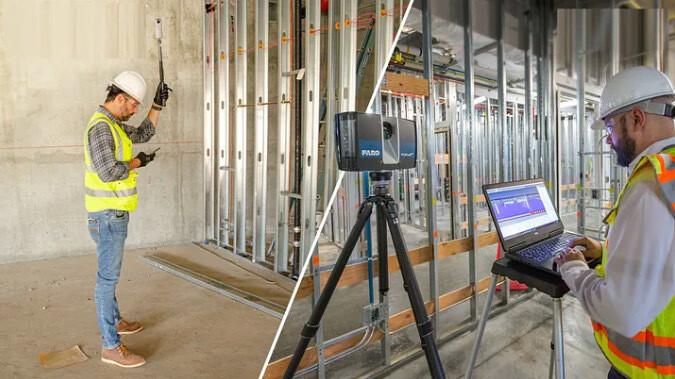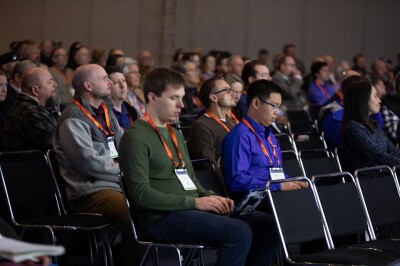The defining trend around the AEC industry over the last decade or so has been a significant uptick in technological adoption. After years of building a reputation for being a sector that was averse to accepting new ways of work, technology is now at the center of most projects and many workflows in the industry’s day-to-day are unrecognizable compared to the way these processes had long been done. This new technology takes many forms, but one of the most prominent is the proliferation of reality capture tools like laser scanners. The extra information from these tools have proven incredibly valuable to firms, but it’s also left them with massive increases in data that has to be stored and transferred between stakeholders, a task that is often easier said than done.

This was the subject at the heart of a recent webinar hosted on Geo Week News entitled Frictionless File Transfer - Lessons from the Streaming Industry and the Future of Reality Capture. The webinar was sponsored by Egnyte, who specializes in data storage and transfer for a variety of industries, including AEC. Kevin Soohoo, Senior Director of Global AEC Practice with Egnyte, hosted the discussion and was joined by Mike Zivanovic, Senior Solutions Architect with FARO. Coming from a company like FARO, the latter is right at the center of this massive increase in data and provides valuable perspective on how firms are currently dealing with this deluge and what a platform like Egnyte’s can offer.
The roughly 60-minute presentation and discussion is available for free on-demand viewing by following the link below.
In an industry that is filled with exciting new technologies, this isn’t exactly the sexiest topic around innovation in the space – something that is explicitly acknowledged by Soohoo in the discussion – but that doesn’t make it any less important. One of the most important points Soohoo hits on during the webinar is that AEC firms today are, in essence, data companies – whether they want to admit it or not. He points to statistics indicating that data storage in the industry has increased by a factor of eight over the last five years, and proper management of this data is absolutely crucial to the health of the overall organization.

Backing up this point, Zivanovic tells the audience, “Data and information fall into the subconscious, but remove data, remove information, remove documentation from any job site, and [the project] immediately stops.”
The data is simply a reality at this point, and the biggest takeaway of this webinar was that firms must adapt to this new environment. Moreover, they can create real advantages for themselves if they use tools like the ones offered by Egnyte to manage said data. Today, somewhat amazingly, a significant amount of data transfer between stakeholders takes place by putting everything on a hard drive and either hand deliver it or send it through the mail to the other party. It gets the data from point A to point B, but that doesn’t mean it’s the best way to handle things.
To better drive this point home, Soohoo makes an analogy to a very different industry to which most of us can relate – entertainment. He talks about the evolution of processes we’ve gone through over the last few decades to choose and watch a movie. For a long time, that meant going to a video rental store like Blockbuster, scanning a physical library and choosing an option to bring home and rent. Eventually, Netflix enhanced this experience, allowing users to scan a digital library and sending a DVD through the mail. Later, we had the ability to forgo the mailing process and simply download the movie to our device. Ultimately, we ended up where we stand today with the ability to simply click play and stream the movie of our choice.
It’s remarkable how similar that timeline is to what AEC firms can – and should – be doing. As the webinar continues, Soohoo and Zivanovic delve into the reasons why this evolution is so important for the industry as a whole and the advantages firms can gain by reaching that final stage at a time when their competitors by and large aren’t.

Soohoo dives into some of the specifics of the Egnyte platform, including advanced file caching capabilities that are resilient against network drops, as a result Egnyte users, including FARO, are able to save significant time by compressing the total time taken to move large files around. Soohoo also touched on several new AI capabilities that streamline the management of both photo and video data along with that from reality capture. Zivanovic adds in the crucial outside perspective as someone with a bevy of experience in the industry who knows first-hand how much this evolution can benefit firms and the sector as a whole, something that is backed up by other users.
MG Engineering Head of Operations & Technology Demetrios Gianniris, for example, has said of Egnyte’s platform for handling large files, “Once we transitioned to enterprise cloud for our document storage, we were able to work more productively and manage files and workflows much faster, largely because Egnyte handles uploads and transfer of large files really well. It’s also the rare cloud platform that works well with Autodesk. All of a sudden, these massive Autodesk CAD files worked a lot better.”
If you are part of an AEC firm who is still mired in one of the first three phases of the movie-watching analogy – i.e. still hand-delivering, mailing, or downloading data – this webinar will provide crucial insight into why that last step is so important. Be sure to follow the link below for your free registration and access to the on-demand recording of the conversation.






